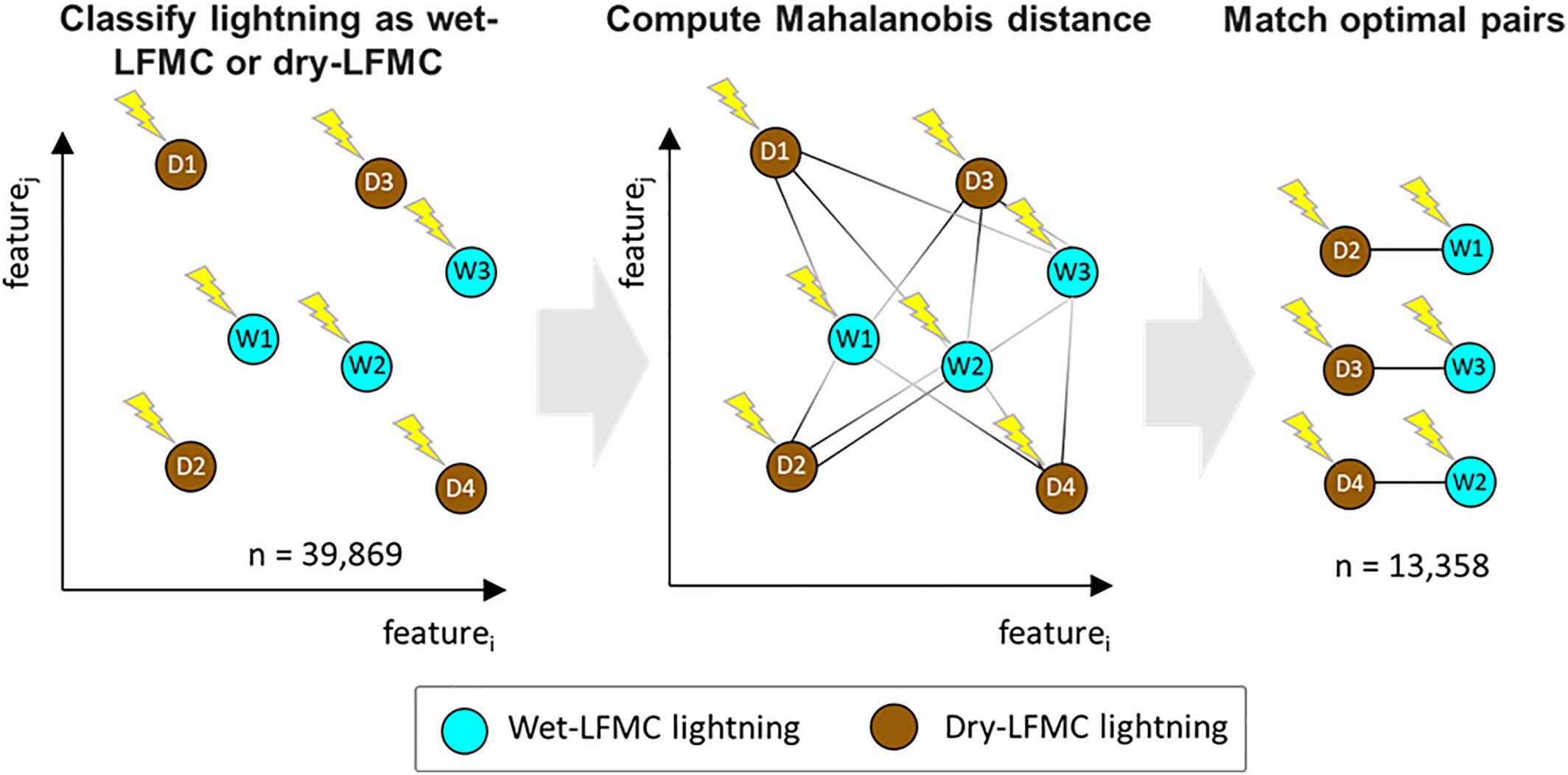Dry Live Fuels Increase the Likelihood of Lightning‐Caused Fires
Published in Geophysical Research Letters, 2023
Recommended citation: Rao, K., Williams, A.P., Diffenbaugh, N.S., Yebra, M., Bryant, C. and Konings, A.G., 2023. Dry Live Fuels Increase the Likelihood of Lightning‐Caused Fires. Geophysical Research Letters, 50(15), p.e2022GL100975. https://agupubs.onlinelibrary.wiley.com/doi/10.1029/2022GL100975
Live fuel moisture content (LFMC) is a key determinant of landscape ignition potential, but quantitative estimates of its effects on wildfire are lacking. We present a causal inference framework to isolate the effect of LFMC from other drivers like fuel type, fuel amount, and meteorology. We show that in California when LFMC is below a critical flammability threshold, the likelihood of fires is 1.8 times as high statewide (2.25% vs. 1.27%) and 2.5 times as high in shrubs, compared to when LFMC is greater than the threshold. This risk ratio is >2 times when LFMC is 10% less than the threshold. Between 2016 and 2021, the risk ratio was highest in 2020 (2.3 times), potentially contributing to the record‐breaking wildfire activity in 2020. Our estimates can inform several wildfire prediction and management applications, including wildfire suppression, prescribed burn planning, and public safety power shutoff implementation.

Approach to select lightning events used for causal inference. Brown (cyan) circles indicate lightning events at places where live fuel moisture content is less (greater) than a pre-determined threshold. To find matched pairs of lightning events with similar covariates, we compute the Mahalanobis distance (calculated over all covariates) across all possible dry-LFMC and wet-LFMC pairs and matched pairs were chosen to minimize the sum of the between-pair Mahalanobis distance across all matched pairs. Note that while 12 features are used for matching, only two feature axes are shown here for visualization.
In the news …
